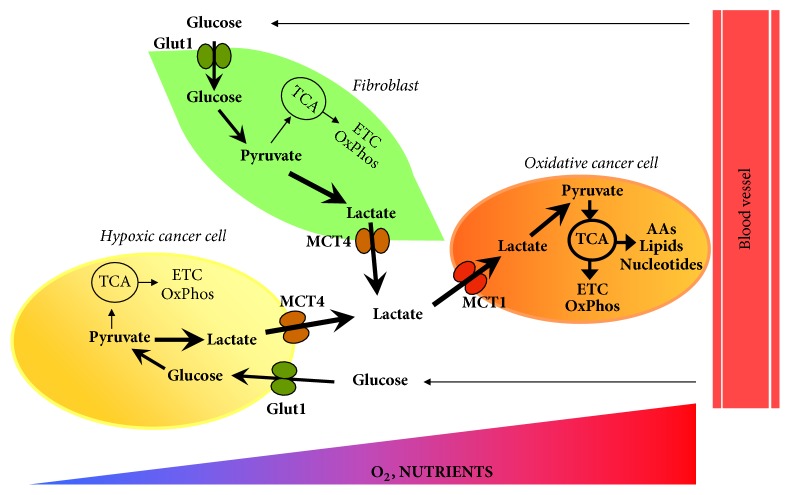Figure 1.
Tumor microenvironment and multicompartment metabolism in thyroid cancer. Oxidative cancer cells (shown in orange), growing under oxygen and nutrient-replete conditions, take up the lactate produced by cancer associated fibroblasts (CAFs, shown in light green) that exhibit a glycolytic phenotype. Cancer cells import lactate through the high affinity monocarboxylate transporter 1 (MCT1) while lactate export involves the low-affinity monocarboxylate transporter 4 (MCT4) in CAFs. Oxidative cancer cells convert lactate in pyruvate that is used for mitochondrial energy production. Experimental evidences support this metabolic symbiosis between cancer cells and CAFs in TC. Furthermore, in several cancer types, cancer cells growing under hypoxic and nutrient starved conditions (shown in light yellow) are more glycolytic compared with oxidative cancer cells and provide them with lactate to fuel tricarboxylic acid cycle and mitochondrial adenosine 5′-triphosphate production. This model needs to be evaluated in TC. ETC: electron transport chain; Glut1: glucose transporter 1; MCT1: monocarboxylate transporter 1; MCT4: monocarboxylate transporter 4; OxPhos: oxidative phosphorylation; TCA: tricarboxylic acid cycle.

